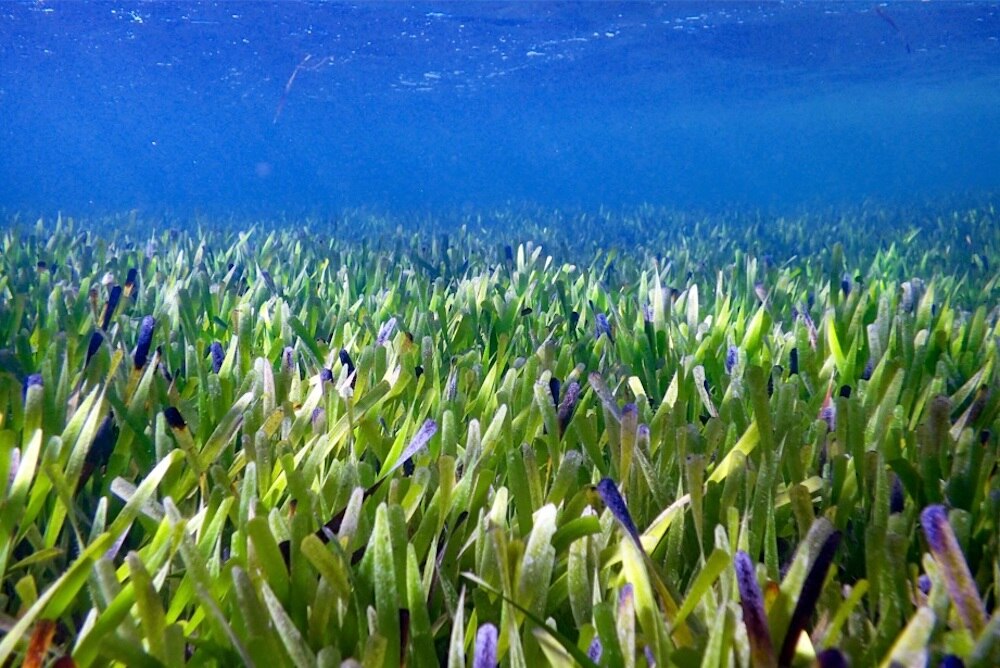Create a free profile to get unlimited access to exclusive videos, sweepstakes, and more!
World’s largest plant is an ancient army of underwater clones some 77 square miles across
Copies of copies of copies.

In 2009, the evil alien Gallaxhar invaded the Earth in search of quantonium, a substance which would allow him to power his cloning machine and build a clone army sufficient to take over our planet. Luckily for the inhabitants of Earth, there was a plucky group of monsters who came to our defense and stopped Gallaxhar before it was too late. These, of course, are the events of the animated film Monsters vs. Aliens, and things might have gone a lot more smoothly for Gallaxhar if he only had the incredible cloning abilities of some plants.
Pando, a clonal colony of quaking aspen trees near Fish Lake in Utah has long been heralded as the largest plant in the world. It takes up roughly 106 acres and is comprised of approximately 40,000 trees, all genetically identical and connected through a single root system. Now, a species of seagrass may have dethroned Pando and claimed the crown of the world’s largest plant.
Elizabeth Sinclair, evolutionary biologist at the School of Biological Sciences and Oceans Institute at the University of Western Australia, and colleagues, studied the genetic makeup of an underwater forest of Poseidon’s Ribbon weed. The flowing seagrass covers an estimated 200 square kilometers and is, shockingly, all one plant. Their findings were published in the journal Proceedings of the Royal Society B.
“There have been all sorts of crazy size comparisons. Three times [the size of] Manhattan, 20,000 football stadiums. There are two measures we can share: total area based on shoot, at approximately 200 square kilometers, and the longest distance by water from two samples with the same genotype at 180-kilometer span,” Sinclair told SYFY WIRE.
This gentle giant in the waters of Gathaagudu (Shark Bay) is known as "Wirriya Jalyanu Nhurra," which translates as "seagrass mob" to the traditional custodians, the Malgana Peoples ("Malgana Elder, Auntie Ada Fossa, may she rest in peace," notes Sinclair). Not only is it truly massive, it’s also old.
Scientists used its current range of 200 square kilometers (some 77 square miles) and a conservative estimate of spread at between 15 and 35 centimeters per year to make a guess at its age. This sort of calculation is complicated by the fact that seagrasses don’t expand linearly and, instead, branch in multiple directions at the same time. Even still, it’s believed that Wirriya Jalyanu Nhurra is approximately 4,500 years old.
This particular plant isn’t wholly unique among seagrasses; large clones have been found before, but never at this scale. It’s able to pull off this impressive biological feat through an unusual reproductive strategy.
“The genetic data suggests the giant seagrass plant grew from a single seed… the difference is that the seed contained a full set of chromosomes from the pollen donor and the maternal plant. It has twice as many chromosomes, 40 chromosomes, as its diploid oceanic relatives which all have 20 chromosomes,” Sinclair said.
That’s good news for the clonal seagrass. It means it has twice as much genetic diversity in its genome as its non-clonal relatives, giving it a better chance at weathering the changing climate. That’s especially important given the unusual environment it has chosen to colonize.
“Shark Bay is regarded as a pretty extreme environment for a flower plant to grow in. [It has] very high light levels, a steep salinity gradient — saltiness of the water almost doubles that of normal seawater as you travel south into the Bays — and a wide temperature range of approximately 16 Celsius [60.8 degrees Fahrenheit] in winter and greater than 30 Celsius [86 degrees Fahrenheit] in summer,” Sinclair said.
The plant’s uniquely robust genome has been sufficient to keep it growing and spreading across the bay for more than 4,000 years, but it’s unclear if its enough to keep it going in the face of anthropogenic climate change. These large clonal plants — Pando and Wirriya Jalyanu Nhurra — are among the most successful individual organisms on our planet and our rapidly shifting global climate is challenging their existence.
We’re not usually in favor of clone armies taking over increasingly large portions of the planet, but in this case, it’s worth making an exception.



























